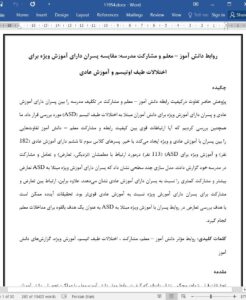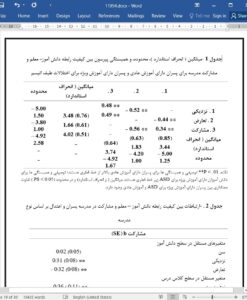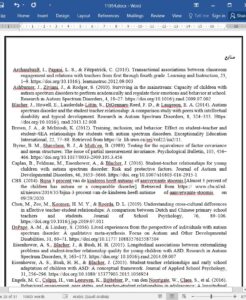Abstract
The present study examined differences in student–teacher relationship quality and engagement with schoolwork between boys from regular education and boys from special education for students with autism spectrum disorders (ASD). We also investigated whether the strength of associations between student–teacher relationship quality and engagement differed across boys from regular and special education. Third-to-sixth grade boys from regular education (N = 182) and special education for ASD (N = 113) reported about the relationship with their teachers (closeness, conflict) and their school engagement. Multilevel modeling showed that boys from special education for ASD reported more conflict and less engagement than boys from regular education. Furthermore, the association between conflict and engagement was stronger for boys from special education than from regular education. Future research may aim to investigate conflict in relationships with boys from special education for ASD as a potential target for teacher interventions.
Introduction
Previous research has found strong evidence that the affective quality of dyadic student–teacher relationships is associated with students’ school functioning, such as their engagement with schoolwork (e. g., Archambault, Pagani, & Fitzpatrick, 2013; Hughes, 2011; Roorda, Jak, Zee, Oort, & Koomen, 2017). More specifically, close relationships with teachers are associated with higher levels of engagement with learning tasks, whereas conflictual relationships with teachers seem to limit students’ engagement with schoolwork (Archambault et al., 2013; Hughes, 2011; Roorda et al., 2017). Furthermore, student-teacher relationships are more strongly associated with the school engagement of at-risk students than for their typically developing peers (Hamre & Pianta, 2001; Roorda, Koomen, Spilt, & Oort, 2011). At-risk students usually also share more disadvantageous relationships with their teachers than their typically developing peers (McGrath & van Bergen, 2015; Nurmi, 2012), placing them further at risk for school maladjustment (Archambault et al., 2013; Hughes, 2011; Roorda et al., 2017).
Conclusion
Our study was one of the first to measure affective, dyadic student–teacher relationships from the perspective of boys from special education for ASD and the first to focus on engagement as aspect of the school functioning of boys from special education for ASD. Our results suggest that boys from special education for ASD, just as teachers (Blacher et al., 2014), experience more conflict in their mutual relationship than boys from regular education. In contrast with teachers’ relationship perceptions (Blacher et al., 2014), however, no differences in student–teacher closeness were found. As student-teacher conflict also seems to be more strongly associated with the school engagement of boys from special education for ASD than for boys from regular education, interventions targeting the degree of conflict in the relationship between teachers and students with ASD are advisable (Spilt et al., 2012). Furthermore, boys from special education for ASD appeared to be less engaged with schoolwork than boys from regular education. Our results suggest that investing in close and conflict-free relationships with students with ASD may be a promising avenue for special education teachers to promote their students’ school engagement. More research focusing on this relatively understudied group of students is needed to find out whether the present findings also generalize to girls with ASD and students with ASD in regular education, and whether the found associations hold over time.











